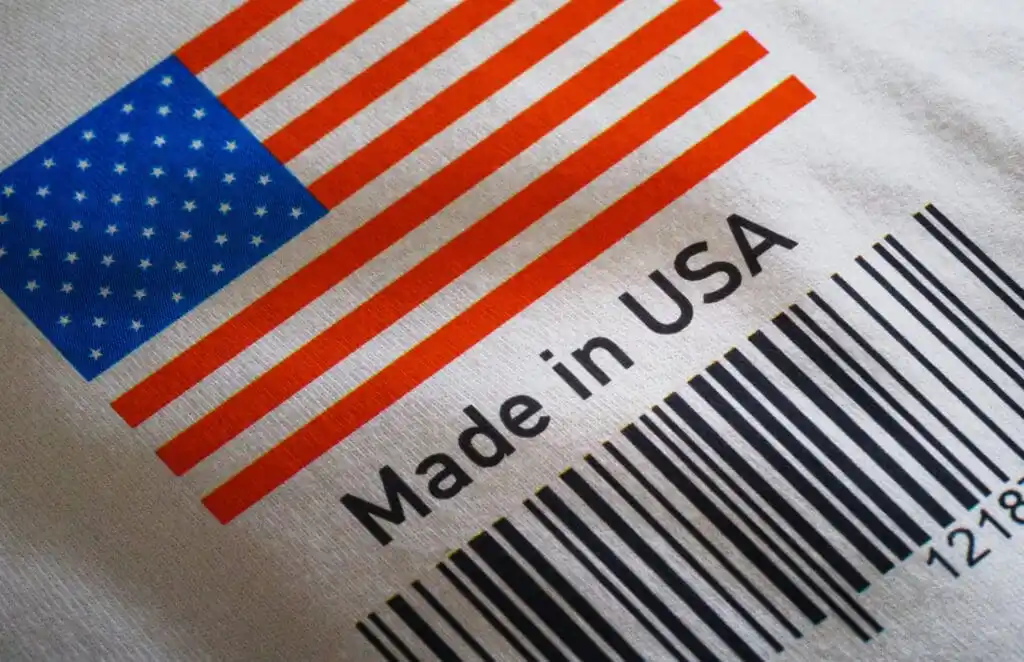How American-Made Apparel Supports Local Economies and Jobs

Every tag that says Made in the USA matters more than fabric and thread. It represents livelihoods, skills, and communities built around honest work.
While the fashion industry has moved overseas in the name of low-cost labor and mass production, buying American-made clothing and apparel is one of the simplest ways to support local economies, preserve craftsmanship, and sustain jobs that keep our neighborhoods alive.
At ProdOrigin, we believe in the brands that make locally, pay fairly, and produce responsibly. In this post, we’ll examine how buying U.S.-made clothes helps communities, the economy, and the future of domestic apparel manufacturing.
1. Supporting Local Jobs
Buying clothing made in the United States supports American workers from textile producers and pattern cutters to logistics teams and local retailers.
Every manufacturing job, according to the Bureau of Labor Statistics, supports about 7 to 10 other jobs in industries like transportation, warehousing, and retail. That multiplier effect means a single thriving apparel factory can revitalize an entire community, particularly in areas that once relied on textile mills or garment workshops.
Local production keeps families employed, skills alive, and communities stable. Something imported fast fashion just can’t replicate.
2. Small and Family-owned Business Support
Many American clothing brands operate on a small-batch or family-run scale. These companies reinvest profits back into their local economies by hiring local talent, using domestic suppliers, and working with U.S. farms and mills.
When you purchase from a domestic brand, you’re not just buying a piece of clothing. You’re helping to sustain a network of independent makers, designers, and entrepreneurs who prioritize craftsmanship over quantity.
This community-based ecosystem strengthens local commerce, fosters entrepreneurship, and keeps money circulating closer to home. It’s not just about buying clothes, it’s about building resilience from the ground up.
3. Rebuilding America’s Apparel Heritage
Once a global leader in textile production, the U.S. experienced a steep decline in manufacturing during the late 20th century. However, a new generation of ethical and sustainable fashion brands is now bringing it back.
Investing in local factories, these companies are creating modern manufacturing hubs that blend old-world skill with new technology. Brands like American Giant, Buck Mason, and Shockoe Atelier are proving that domestic apparel can be innovative, competitive, and full of style.
Each purchase you make with these brands helps support that rebirth and aids in rebuilding an industry that once formed the backbone of many American communities.
4. Strengthening Regional Supply Chains
Buying locally made apparel shortens the supply chain, which means fewer shipping miles, less carbon emissions, and greater transparency. But the benefits of nearshoring go beyond sustainability. They’re economic too.
Shorter supply chains allow brands to source materials from U.S. farms and mills, keeping profits from raw materials in domestic hands. Cotton grown in Georgia, or denim woven in North Carolina, can end up in garments sewn in Los Angeles or Nashville. It creates a coast-to-coast cycle of economic support. When production stays within national borders, every link in that chain, from farmers to finishers, benefits.
5. Fair Wages and Worker Protections
Unlike many overseas factories that rely on low wages and poor conditions, U.S. apparel manufacturing has to comply with federal and state labor laws. Workers receive fair compensation, regulated hours, and safe workplaces.
These protections not only support the workers themselves but also strengthen the local economies in which they participate. Fair wages translate to more spending power, boosting nearby businesses, restaurants, stores, and services, thereby forming a sustainable, circular economy.
Why Buying American-Made Apparel Is Important to Communities
The importance of buying domestically reaches far beyond individual purchases. It also generates civic pride, promotes sustainable business practices, and inspires collaboration between designers, artisans, and consumers.
Communities with strong manufacturing bases tend to have higher employment stability and stronger local economies. This, in turn, leads to better schools, infrastructure, and quality of life overall.
At ProdOrigin, we believe that supporting American-made products is a vote for the values of people, progress, and purpose that have always defined true craftsmanship.
Frequently Asked Questions (FAQs)
1. How does buying American-made clothing create jobs?
Every purchase supports manufacturers, suppliers, and local retailers, creating ripple effects across industries connected to apparel production and logistics.
2. Are American-made clothes really better for the economy?
Yes. Domestic production keeps profits within the U.S., increases tax revenue, and reduces dependence on imports, strengthening long-term economic resilience.
3. Why do American-made clothes cost more?
Higher prices reflect fair wages, local materials, and ethical production. Over time, the durability and transparency of these garments make them a better investment.
4. How can consumers identify authentic U.S.-made apparel?
Look for transparent labeling that specifies where garments are sewn and materials are sourced. Verified American-made brands are also featured on ProdOrigin.com.
5. What’s the best way to support local apparel manufacturing?
Buy from domestic brands, share their stories, and encourage others to prioritize quality over quantity. Even small changes in purchasing habits can make a measurable difference.
